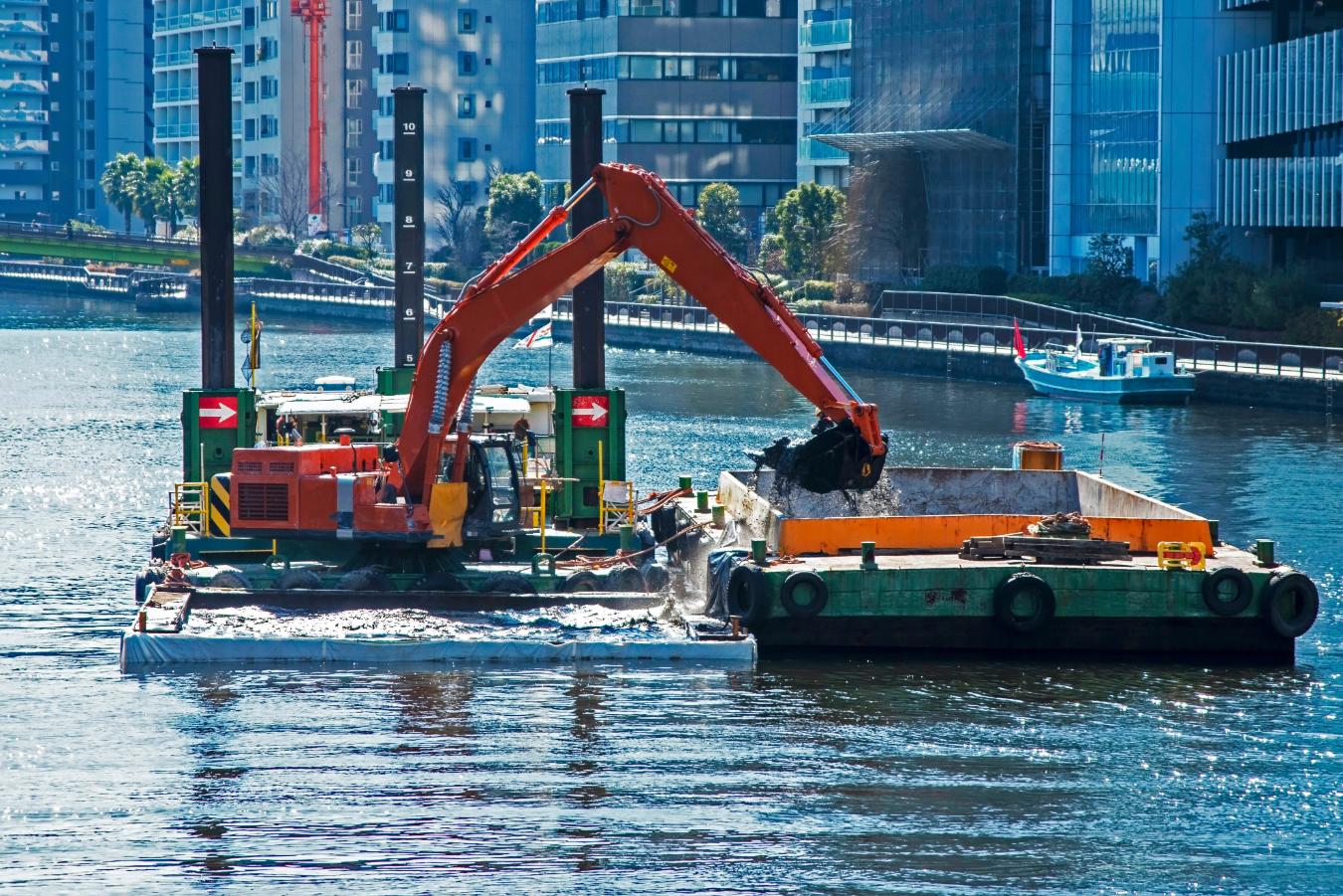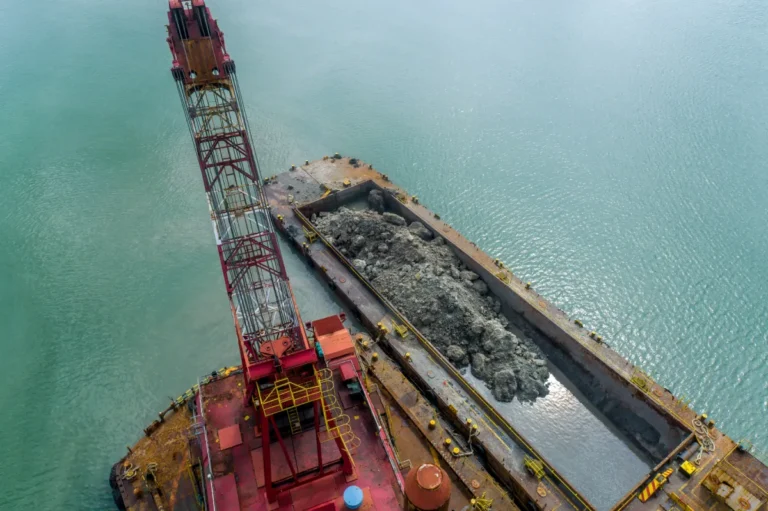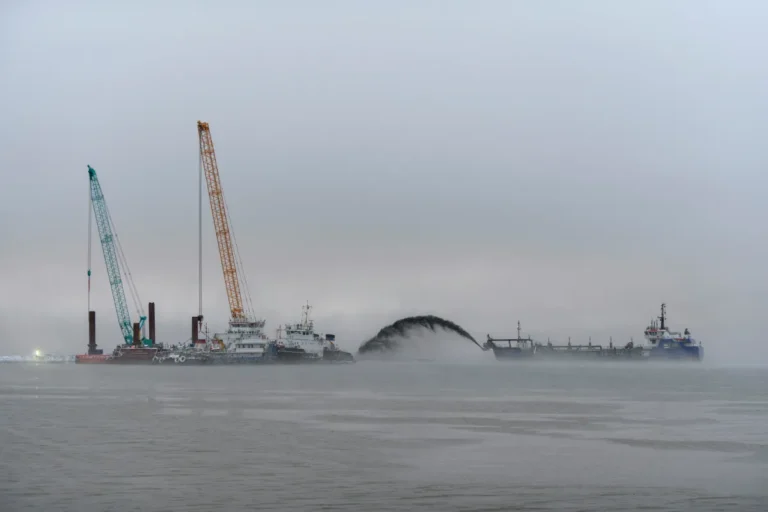Sediment buildup is a common challenge in rivers, lakes, stormwater ponds, and industrial basins. Over time, organic matter, silt, and debris accumulate, reducing water depth, disrupting aquatic ecosystems, and impacting infrastructure and operational efficiency. Traditional dredging methods, while effective, can often be expensive, time-consuming, and difficult to deploy in hard-to-reach or shallow areas.
To address these challenges, the industry is shifting toward more efficient, mobile, and scalable dredging technologies. One such innovation is the excavator dredge attachment, which transforms a standard excavator into a powerful dredging machine. These attachments are designed to work directly from shorelines, barges, or amphibious excavators, eliminating the need for large dredge vessels and allowing for precise sediment removal in tight or shallow environments.
Whether you’re managing stormwater retention ponds, restoring navigability in a waterway, or performing environmental remediation, lake dredging equipment equipped with an excavator dredge pump provides a compact, adaptable, and high-performance solution.
In this article, we’ll explore the top five benefits of using excavator dredge attachments for sediment removal and how they’re changing the way contractors and municipalities approach dredging projects.
What Is an Excavator Dredge Attachment?
An excavator dredge attachment is a specialized piece of equipment designed to convert a standard excavator into a powerful and efficient dredging system. Mounted directly onto the boom or stick of an excavator, these attachments allow operators to remove sediment, sludge, and slurry from bodies of water with precision and control. They are widely used in environmental remediation, flood prevention, and infrastructure maintenance projects where traditional dredging methods may be impractical or cost-prohibitive.
There are several types of excavator dredge attachments, each engineered for specific dredging conditions:
- Cutterhead Attachments: Designed to agitate compacted or consolidated sediment before suction, making them ideal for tough dredging environments.
- Slurry Heads: Focused on mixing and pumping softer sediments and sludge with minimal disturbance.
- Excavator Dredge Pumps: These are heavy-duty hydraulic or electric pumps mounted on the excavator that can move large volumes of water, silt, and solids through discharge hoses to designated disposal sites.
Unlike traditional dredging systems, which often require floating platforms or dedicated dredge boats, an excavator dredge attachment allows operators to dredge from the shoreline or shallow barges. This eliminates the need for complex mobilization and significantly reduces the overall footprint of the operation.
These attachments are compatible with a wide range of equipment, including tracked excavators and amphibious excavators, enabling work in soft, marshy, or submerged areas where conventional machinery cannot reach. Their flexibility and effectiveness have made them a popular choice for contractors seeking reliable lake dredging equipment that can be deployed quickly and adapted to various sediment removal scenarios.
Cost-Effective Sediment Removal
One of the most compelling advantages of using an excavator dredge attachment is its ability to reduce the overall cost of sediment removal significantly. Traditional dredging methods often require dedicated dredge vessels, floating platforms, and support barges, all of which come with substantial operating and maintenance expenses. In contrast, an excavator dredge attachment can be installed on equipment already available in most fleets, allowing contractors and municipalities to bypass the need for costly standalone dredging systems.
By eliminating the dependence on separate dredging vessels, project teams benefit from lower labor and mobilization costs. The same crew that operates standard excavation jobs can typically run the dredging attachment, reducing the need for specialized labor or subcontractors. This streamlines staffing and simplifies logistics, especially on remote or smaller-scale projects.
Additionally, the ability to use existing excavators—whether land-based or amphibious—means organizations don’t have to make large capital investments in new machinery. With an excavator dredge pump integrated into the attachment, the system becomes fully self-contained and capable of pumping sediment directly to designated discharge areas.
Shorter project durations also contribute to cost savings. Because lake dredging equipment, which utilizes an excavator attachment, is highly maneuverable and quick to deploy, sediment removal tasks can be completed more efficiently, minimizing downtime and increasing jobsite productivity.
Enhanced Mobility and Access to Remote Sites
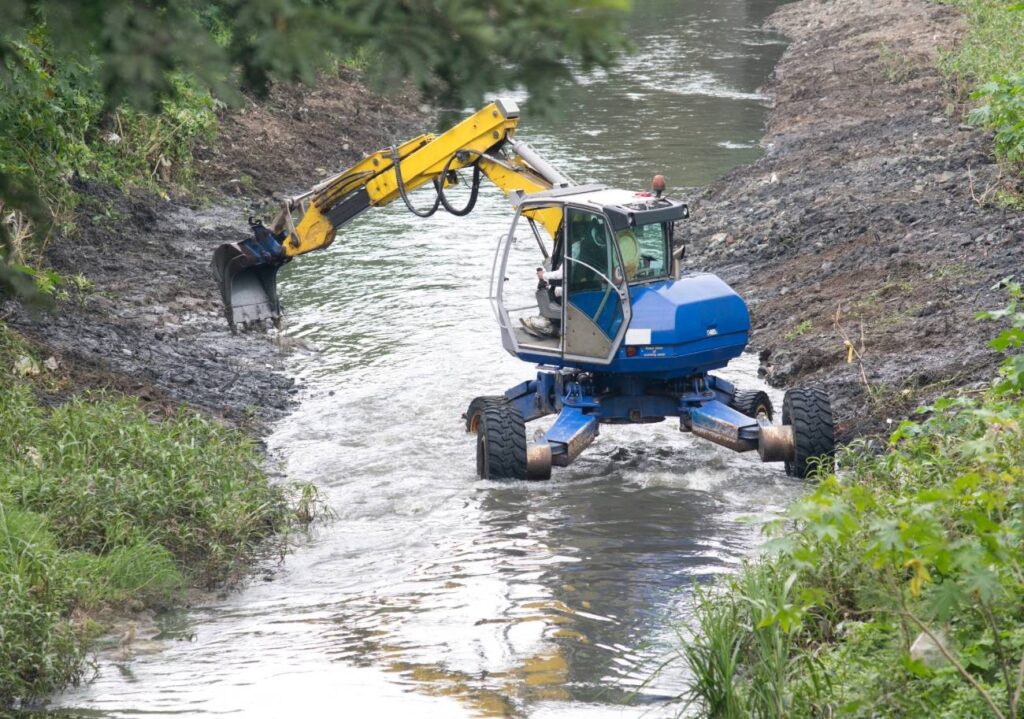
When it comes to dredging in hard-to-reach or shallow locations, the excavator dredge attachment offers a level of mobility that traditional systems simply can’t match. Designed for versatility, these attachments are ideal for sediment removal in shallow water bodies, wetlands, stormwater retention ponds, and remote areas where access is limited and terrain is unpredictable.
One of the key advantages is compatibility with amphibious excavators, which are engineered to operate in soft, waterlogged, or swampy ground. When paired with an excavator dredge pump, this combination allows operators to dredge directly from unstable or submerged areas without requiring additional floating platforms or heavy marine equipment.
Relocating dredging operations from one site to another is also much faster and more cost-effective with an excavator dredge attachment. Since the system is mounted on mobile excavators, it can be transported by trailer and deployed at multiple job sites with minimal setup time. This agility is especially valuable for contractors managing multiple small-scale dredging projects or emergency response operations.
Compared to traditional barge-mounted dredging systems, which require extensive planning, setup, and access to water, a land-based or amphibious lake dredging equipment setup provides faster mobilization and greater flexibility. Whether it’s clearing sediment from isolated lagoons or restoring depth in urban stormwater basins, an excavator-mounted dredging solution delivers unmatched reach and adaptability.
Superior Material Handling with Excavator Dredge Pumps
A critical component of any excavator dredge attachment is the integrated excavator dredge pump, which is specifically engineered to move high volumes of solids-laden material. Unlike conventional pumps, which often struggle with abrasive or high-viscosity slurry, these dredge pumps are designed to handle the harshest sediment conditions with ease.
One of the standout features of an excavator dredge pump is its ability to process high-solids concentrations, often up to 30-40% by volume. This makes it ideal for removing thick, compacted sediment, sludge, or gravel from the bottoms of lakes, tailings ponds, or industrial lagoons. As a result, fewer passes are needed to complete dredging operations, boosting productivity and reducing operational time.
These pumps also outperform centrifugal and diaphragm pumps in terms of durability and uptime. With fewer internal components and a non-clogging design, excavator dredge attachments equipped with slurry-optimized pumps experience significantly less maintenance downtime, even when pumping abrasive materials such as sand or coal fines.
In high-demand dredging projects where time and efficiency are crucial, the high-capacity throughput of these systems becomes a game-changer. Whether you’re deploying the setup as part of a shoreline restoration project or using it as lake dredging equipment for municipal waterway maintenance, the pump’s powerful flow capabilities help ensure fast, consistent sediment removal under tough conditions.
Precision Dredging for Environmental Protection
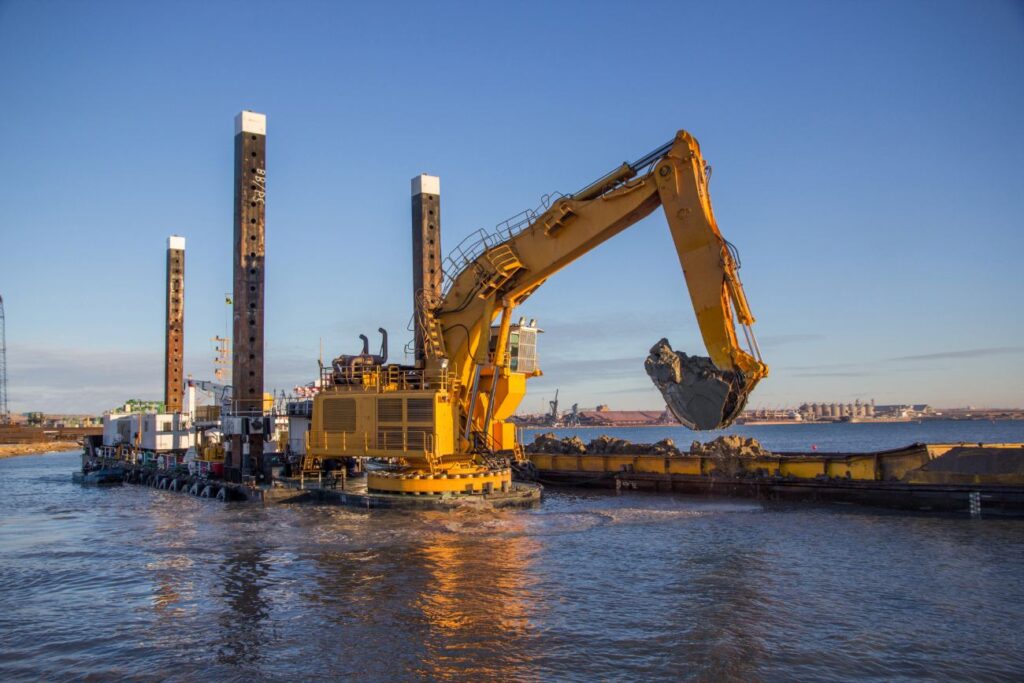
Environmental sensitivity is a growing concern in modern dredging operations, particularly in ecologically sensitive areas such as lakes, wetlands, and stormwater ponds. An excavator dredge attachment provides precise control over sediment removal, making it an ideal solution for projects that require accuracy and minimal ecological impact.
Because the attachment is mounted directly to the excavator arm, operators can achieve fine control over dredging depth and location. This allows targeted removal of contaminated or excess sediment without disturbing surrounding substrates or aquatic habitats. In contrast to large-scale cutter suction dredgers, which often operate with broader and more aggressive excavation patterns, excavator dredge pumps paired with these attachments offer a much gentler approach.
This precision is particularly valuable when using lake dredging equipment for improving water quality, restoring shorelines, or decontaminating sediments. Whether the goal is to remove nutrient-rich sludge that contributes to algal blooms or to extract sediment contaminated with industrial pollutants, the excavator-mounted system enables precise accuracy.
Furthermore, the reduced turbidity and limited sediment plume generation help protect fish populations, aquatic vegetation, and water clarity. As a result, excavator dredge attachments are frequently selected for environmental remediation projects where both effectiveness and ecosystem preservation are essential.
Versatility Across Applications and Industries
One of the defining strengths of the excavator dredge attachment is its unmatched versatility across a wide range of dredging environments and project types. Whether it’s a municipal stormwater cleanup, an industrial dewatering task, or an environmental restoration effort, this adaptable system delivers reliable performance in diverse settings.
Municipalities utilize excavator dredge attachments to maintain retention basins, stormwater ponds, and urban waterways, where access is limited and environmental impact must be minimized. In the industrial sector, they’re deployed for dredging tailings ponds, removing abrasive slurry from processing facilities, and performing preventative maintenance on waste lagoons. Environmental contractors rely on this solution for the delicate removal of sediment in contaminated sites, wetlands, and protected water bodies.
Common applications include reservoir maintenance, canal deepening, and tailings pond reclamation—all of which require equipment that can adapt to various sediment types and operating conditions. The system’s modular design supports interchangeable attachments, such as slurry heads or cutterheads, allowing operators to switch tools based on material density or desired flow characteristics.
Moreover, excavator dredge pumps can be configured to run on either hydraulic or electric power systems, depending on the site’s infrastructure and environmental restrictions. This flexibility makes the excavator-mounted system one of the most practical choices for modern lake dredging equipment, especially when balancing performance, environmental compliance, and operational efficiency.
How to Choose the Right Excavator Dredge Attachment
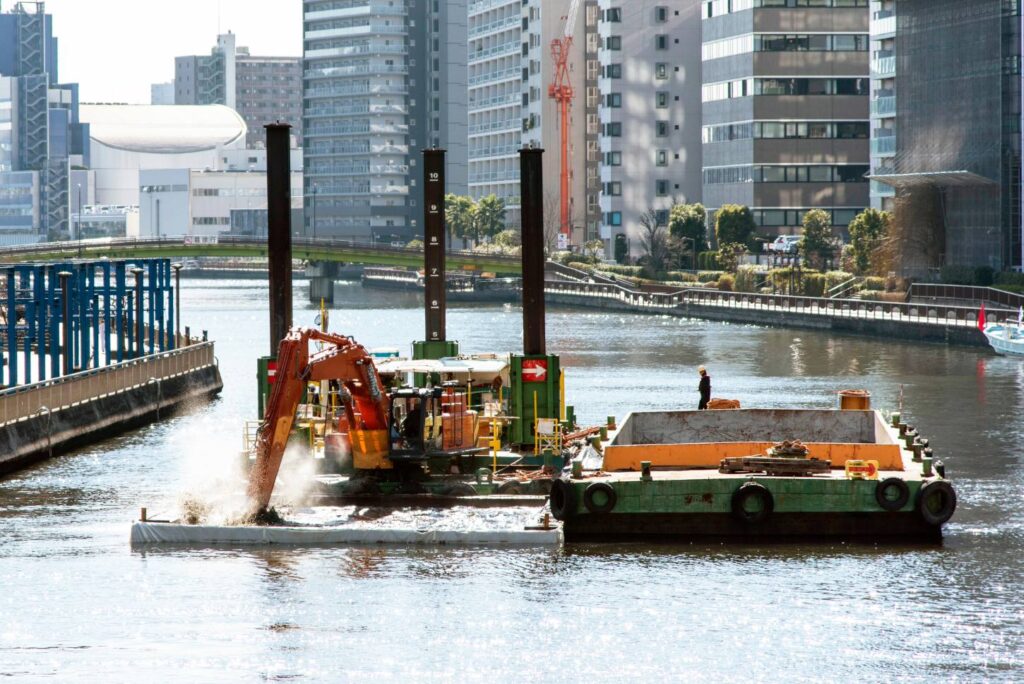
Selecting the right excavator dredge attachment is critical to the success and efficiency of any sediment removal project. With a variety of attachments and configurations available, understanding your project’s specific requirements will help you choose the most effective setup.
Begin by evaluating key operational factors, including water depth, sediment type, flow rate requirements, and the size of the excavator. For shallow ponds or lakes, a compact attachment may suffice, while deeper or larger bodies of water may require longer reach or increased pump capacity. The type of sediment—whether it’s light silt, heavy clay, or abrasive sand—will also influence the choice of cutterhead or slurry head, as well as the specifications of the integrated excavator dredge pump.
When selecting a pump, you’ll need to choose between standard-duty and high-performance models. High-performance excavator dredge pumps are designed to handle high solids content and deliver faster throughput, which is essential for demanding applications such as lake dredging and industrial tailings reclamation. Standard pumps may be more cost-effective for lighter-duty or occasional use, but may not provide the required durability or flow rates for larger-scale projects.
It’s also important to consider long-term maintenance and operational needs. Look for attachments with wear-resistant components, easy access to service points, and built-in protections against clogging or cavitation. The availability of spare parts and local service support can dramatically affect your equipment’s uptime.
Finally, ensure you work with a reputable manufacturer that offers comprehensive OEM support, including installation assistance, performance tuning, and technical guidance. Expert advice can help you maximize the return on investment from your excavator dredge attachment, ensuring that it delivers reliable results across all phases of your dredging operations.
Conclusion
In today’s demanding sediment removal environments, the excavator dredge attachment stands out as a smart, versatile, and cost-effective solution. From reducing project costs and mobilization time to offering precise sediment control and superior slurry handling, these attachments are transforming how dredging is performed across municipal, industrial, and environmental sectors.
Whether you’re working in shallow retention ponds, remote wetlands, or large-scale tailings sites, integrating an excavator dredge pump with your existing equipment offers unmatched flexibility and performance. As part of a modern lake dredging equipment arsenal, these attachments provide a reliable alternative to traditional dredging methods, without the need for cumbersome barges or an excessive workforce.
For contractors, municipalities, and environmental professionals looking to streamline operations and enhance dredging efficiency, investing in the right excavator-mounted system can make all the difference. With the proper selection, support, and configuration, an excavator dredge attachment can become the cornerstone of your next successful sediment removal project.


